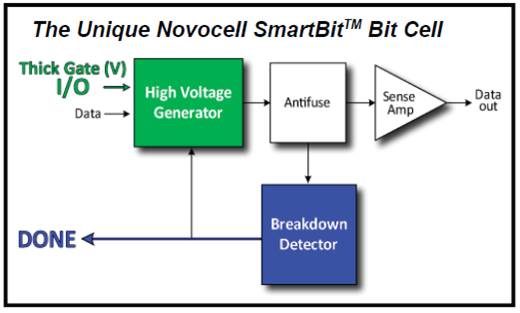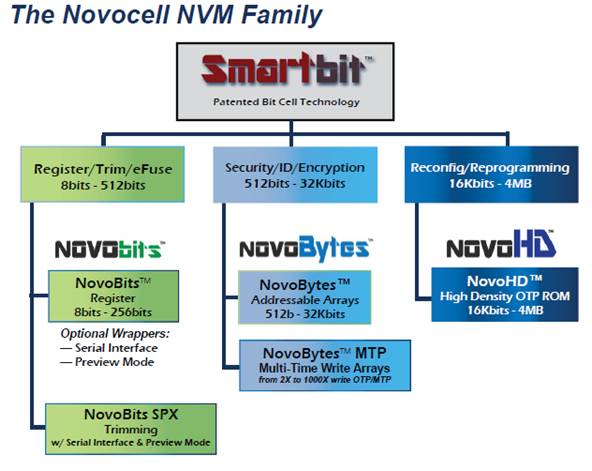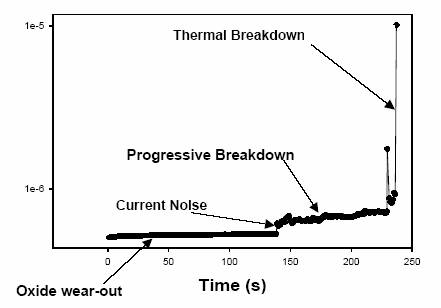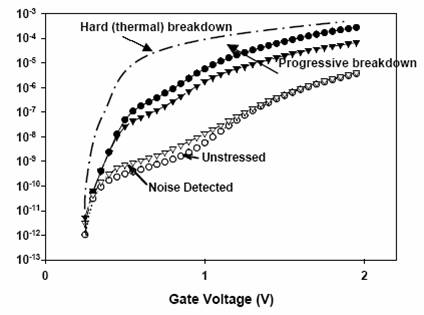In this pretty shaky NVM IP market, where articles frequently mention legal battles rather than product features, it seems interesting to look at Novocell Semiconductor and their NVM IP product offering, and try to figure out what makes these products specific, what are the differentiators. Before looking at SmartBit cell into details, let’s just have a quick look about the market size of the NVM IP market. The NVM as a technology is not so young, I remember my colleagues involved in Flash memory design back in 1984 at MHS then moving to STM to create a group who has, since then, generated billion dollars in Flash memory revenues. But the concept of NVM block which could be integrated into an ASIC is much more recent, Novocell for example has been created in 2001. I remember that, in 2009, analyst predictions for the size of this IP market was around $50 million for 2015. The NVM IP market is not huge, and probably weights a couple of dozen $M today, but it’s a pretty smart technology: integrating from a few bytes to up to Mbits into a SoC can help reducing the number of chips in a system, increase security and allow for Digital Right Management (DRM) for video and TV applications, or provides encryption capability.

To come back to embedded NVM technology, the main reason for their lack of success in ASIC in the past (in the 1990’s) was the fact that integrating a Flash memory block into a SoC was requesting to add specific mask levels, leading to an over-cost of about 40%. I remember trying to sell such an ASIC solution in 1999-2001: it was looking very attractive for the customer, until we talk about pricing and the customer realizes that the entire chip would be impacted. I made few, very, very few sales of ASIC with embedded Flash! The current NVM IP offering from Novocell Semiconductor does not generate such a cost penalty; the blocks can be embedded in standard Logic CMOS without any additional process or post process steps and can be programmed at the wafer level, in package, or in the field, as en use requires.

An interesting feature offered by the Novocell NVM family, based on antifuse One Time Programmable (OTP) technology, is the “breakdown detector”, allowing to precisely determining when the voltage applied to the gate (allowing programming the memory cell by breaking the oxide and consequently allowing the current to flow through this oxide) will effectively have created an irreversible oxide breakdown, the “hard breakdown”, by opposition of a “soft breakdown” which is an apparent, reversible oxide breakdown. If the oxide has been stressed during a period of time which is not long enough, the hard breakdown is not effective and the user can’t program the memory cell. Looking at the two pictures (below) help understanding the mechanisms:
- On the first, the current (vs time) is going up sharply only after the thermal breakdown is effective

- The next pictures shows the current behavior of a memory cell for different cases, and we can see that when the hard breakdown is effective the current value is about three order of magnitude higher than for a progressive (or soft) breakdown.

Thus, we can say that one of the Novocell’s differentiator is reliability. To avoid the limitations of traditional embedded NVM technology by utilizing the patented dynamic programming and monitoring process and method of the Novocell SmartBit™, ensuring that 100% of customers’ embedded bit cells are fully programmed. The result is Novocell’s unmatched 100% yield and unparalleled reliability, guaranteeing customers that their data is fully programmed initially, and will remain so for an industry leading 30 years or more. Novocell NVM IP scales to meet all NVM size and complexity challenges that grow exponentially as SoCs continue to move to advanced nodes such as 45nm and beyond.
Eric Esteve from IPNEST –








Quantum Advantage is About the Algorithm, not the Computer